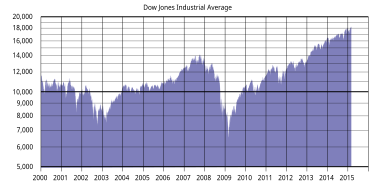Editorial Cartoon Maze on a Dow Jones Airline, by Yonatan Frimer
Click here for a printable, hi-res version of this maze
Click here or on the image for the solution to the maze.
Check out some more Political Mazes
Sign up for daily mazes on Political Maze on GoComics
Check out awesome MAZE ART on Ink Blot Mazes
Buy Maze Art on Fine Art America
More about this mazes topic, The Dow Jones:
Dow Jones Industrial Average
The Dow Jones Industrial Average, also referred to as the Industrial Average, the Dow Jones, the Dow 30, or simply the Dow, is one of several stock market indices created by Wall Street Journal editor and Dow Jones & Company co-founder Charles Dow. The average is named after Dow and one of his business associates, statistician Edward Jones. It is an index that shows how 30 large, publicly owned companies based in the United States have traded during a standard trading session in the stock market.[1] It is the second oldest U.S. market index after the Dow Jones Transportation Average, which Dow also created.
The Industrial portion of the name is largely historical, as many of the modern 30 components have (Click here to read the rest)
Recent logarithmic graph of the DJIA from Jan 2000 through Oct 2009.



No comments:
Post a Comment